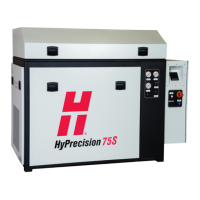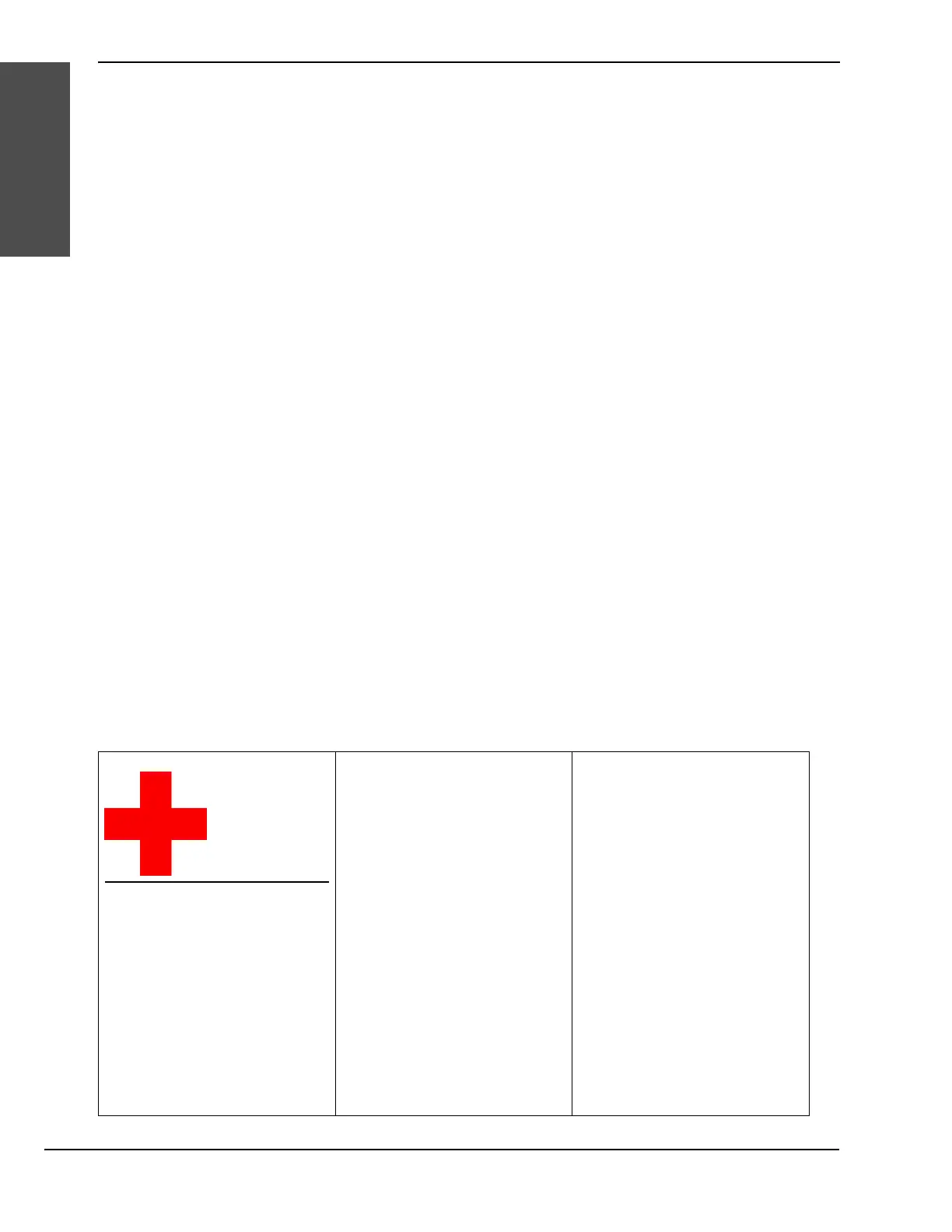SC-20 Safety and compliance
Safety
Safety
User qualification and training
All users must read and understand these instructions before installing, operating, or doing maintenance on this
equipment.
Do not permit an untrained person to operate this equipment. Operators must be qualified to operate and
maintain this equipment. Training should include this information:
How to start and stop the equipment during routine operation and in an emergency situation
The conditions and actions that can lead to injuries to people and damage to the equipment
How to operate all controls
How to identify and respond to a problem with the equipment
How to do maintenance procedures
A copy of the operator manual
This list is not all-inclusive.
Emergency medical information and treatment
The use of high-pressure equipment exposes the operator and other people in the area to high-pressure water.
Potential harms include eye injuries, lacerations, infections, and amputations. Do not put ice or heat on a waterjet
injury. Support injured limbs and extremities above heart level if possible.
A high-pressure injection injury is a surgical emergency. Seek immediate medical treatment for all high-pressure
waterjet injuries. Delayed treatment can cause serious injuries or death.
Waterjet operators should carry a waterproof emergency medical tag or card that describes the nature of
high-pressure waterjet injuries and the recommended treatment. Show the tag or card to emergency responders
and medical professionals.
This card can be copied, cut out, laminated, and folded.
A high-pressure injection injury is a
surgical emergency.
Seek immediate medical treatment for
all high-pressure waterjet injuries.
Delayed treatment can cause serious
injuries or death.
The person carrying this card has been
exposed to a waterjet of up
to 4,137 bar (60,000 psi) and a velocity
of 609 m/s (2,000 feet/second). The
waterjet can contain abrasive
materials.
Skin can appear intact or show a minor
pinhole-sized puncture wound. The
injured area can become swollen, painful,
and pale over the next 4 to 6 hours.
Tissue becomes ischemic and necrotic
within 12 hours.
Consult a surgical specialist immediately
for decompression, removal of foreign
materials, and debridement.
Administer broad-spectrum, intravenous
antibiotics for Gram-negative and
Gram-positive organisms.
X-ray is the imaging of choice.
Acute compartment syndrome is possible.
Leave the wound open.
Do not use solvents other than isotonic
sodium chloride solution for irrigating the
wound.
Do not use digital or local nerve blocks.
Give analgesics by mouth or injection.

